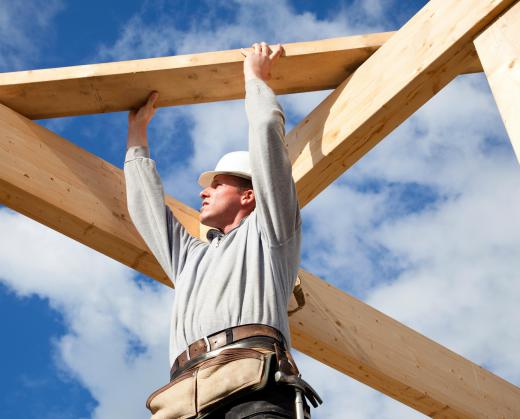A panelized building is a structure that is built with factory-made wall sections, which are assembled at the site. There are several advantages of a panelized building. The most noticeable advantage may the amount of money a homeowner can save with this type of construction. In 2006, a study conducted by the Structural Building Components Association found that a panelized building, compared to a stick built structure, required 37% fewer man hours to build.
Another advantage to constructing a panelized building is the time saved, which also means less money spent. One of the main delays in the construction of a stick built structure is the weather. If it's raining or snowing, construction is usually delayed. With a panelized building, each panel is constructed in a climate controlled facility, which reduces the amount of construction time greatly. Panels can be built in a matter of only a few days. Once they are shipped to the home site, they can be put together in less than a week.

Human error is something that happens quite frequently in stick built construction. The floor of a new living room may be almost square, but off by a little. Even though it may not be obvious when you look at it, the building is still out of proportion. With a panelized building, the cuts are generated through a computer system, and all cuts and measurements are 100% precise.
Individuals who work in a panel facility are trained on one specific area of the construction process. With the amount of training that they receive and the amount of time they spend working hands on, they are considered experts in their task. In areas that requires special building codes, such as those for earthquakes or strong winds, these specifications can easily be factored into the construction of a panelized building.
Panelized buildings are also known as "green buildings." They often have a lower impact on natural resources, and can lower the energy bill for a home. As an example, on a 2,600 square foot (241.5 square meter) space, a panelized building would use 76% less lumber than would a stick built structure. With their precision design and a combination of steel and polystyrene, these homes cost less to heat and cool.
Builders are not limited in the type of exterior finish for a panelized building. There are a number of choices, including veneer, siding, brick, and many others. A panelized building can also be finished in almost any color.
Even for owners of existing homes, it isn't too late to take advantage of a panelized building. In many cases, panels can be installed over existing structures. This can help them to become stronger and more energy efficient.
